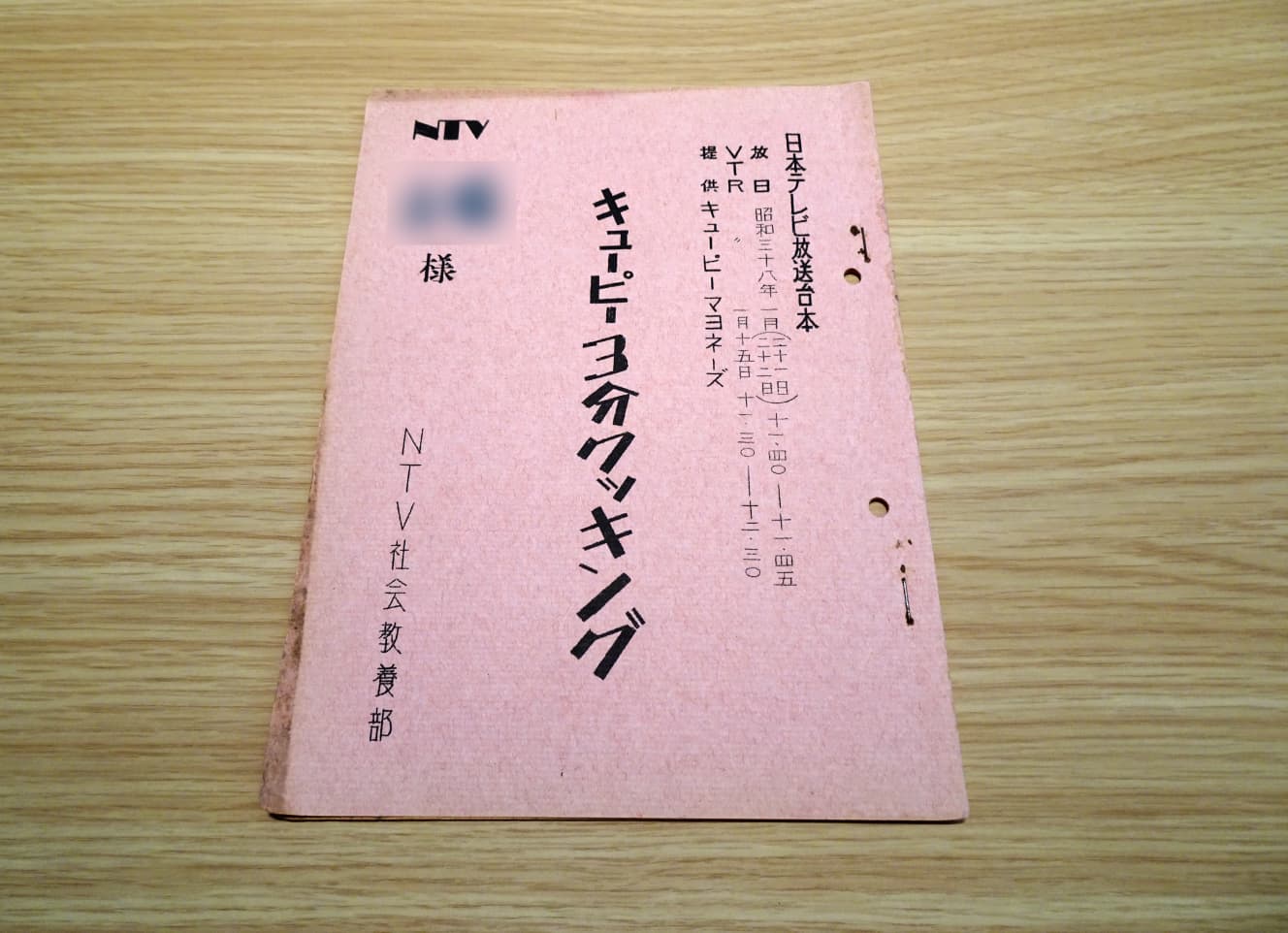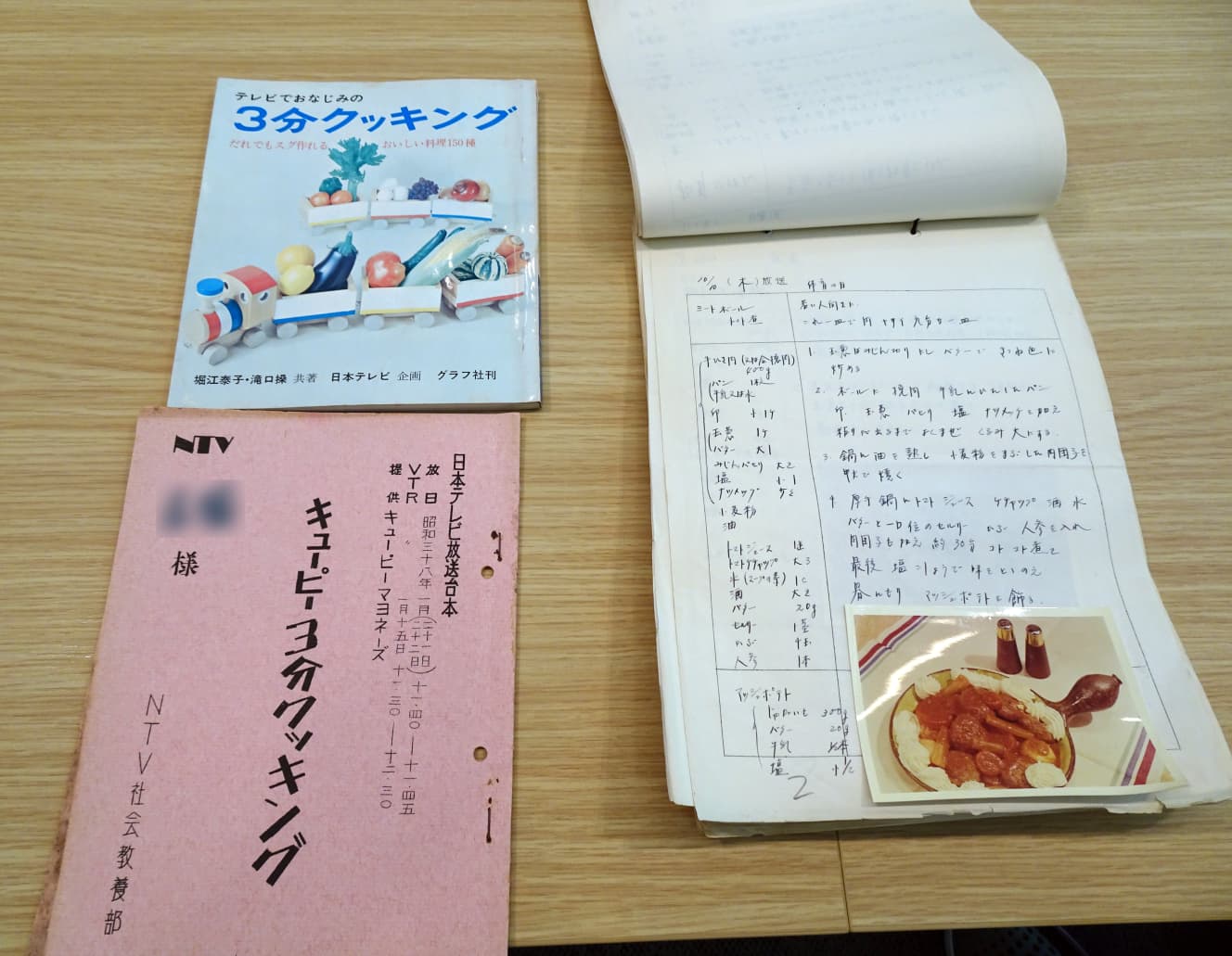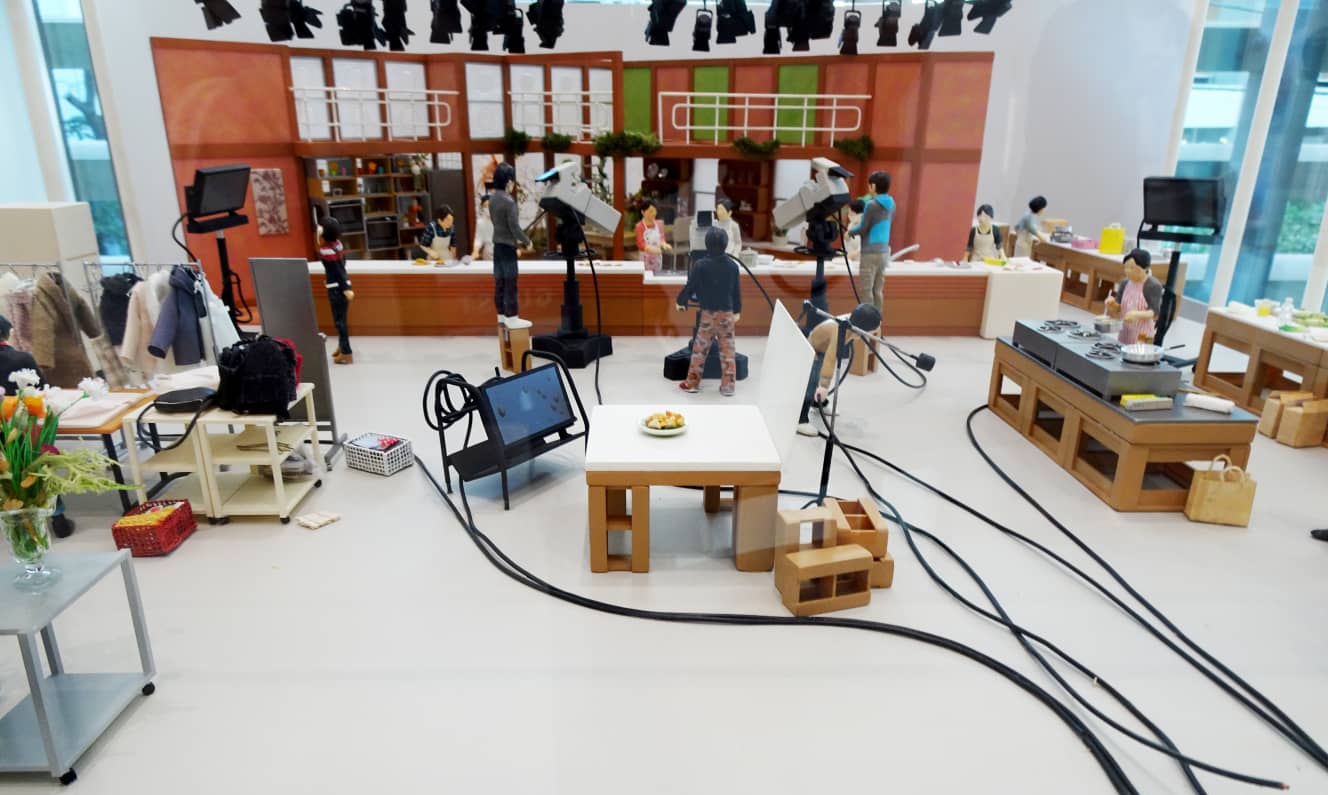Is there two “Kewpie 3 Minute Cooking”? The “Secret Story” of the 60th Anniversary of the Broadcast
The “Kewpie 3 Minute Cooking” you grew up watching and the “Kewpie 3 Minute Cooking” I grew up watching may possibly be two different programs.
How is that possible? It is a mysterious story, but it is very possible.
Kewpie 3 Minute Cooking” has been on the air for 60 years. It is not only a valuable long-running program that should be called a “TV legacy,” but it is also a rather strange program, as it has been broadcast in two versions, one on NTV and the other on CBC TV, with different recipes introduced in each version.
We visited the head office of Kewpie Corporation in Shibuya, Tokyo, to hear the secret behind the long-lasting popularity of “Kewpie 3 Minute Cooking,” a fascinating and well-thought-out program, and the program’s production.

Ms. Yukie Kato, who is in charge of “Kewpie 3-minute Cooking” at To-Ad Kewpie Co.
I, the interviewer, am a TV person who has worked for many years in various program productions. From a TV producer’s point of view, the first thing that caught my attention was, as I mentioned at the beginning of this article, the fact that two “Kewpie 3-Minute Cooking” programs are still being produced today.
The first question: Why are there two “Kewpie 3-minute Cooking”?
Kewpie 3 Minute Cooking” began broadcasting in 1962. At that time, the commercial network had not yet been developed, so multiple TV stations each produced their own “Kewpie 3-minute Cooking” programs.
In other words, “Kewpie 3-Minute Cooking” has existed longer than the commercial networks in Japan.
Another reason is that at that time, the national food distribution network was not yet in place. Food culture differed greatly across the country, so we had to broadcast different programs for each region,” says Kato.
The fact is that introducing the same menu recipes uniformly throughout the country was not yet in line with the actual situation in Japan.
For these reasons, five different “Kewpie 3 Minute Cooking” programs were produced by five different broadcasters at the beginning of the broadcast: Sapporo (HBC), Sendai (TBC), Tokyo (NTV), Nagoya (CBC), and Fukuoka (KBC) (*). (* The start year of broadcast was different for each).
These were reorganized with the development of the network, and now two types are broadcast by NTV (18-station network) and CBC TV (13-station network).
However, “Hokkaido’s version” produced by HBC was broadcast until 1998 because “only Hokkaido still has its own food culture.
In other words, in the 20th century, there were three different “Kewpie 3 Minute Cooking” programs on the air at the same time. The reason for the mystery is this: “What you grew up watching and what I grew up watching may not be the same.
Second question: why did they choose “3 minutes”? There was a profound reason.
Mr. Kato said, “As it has been 60 years since the program was first broadcast, there are actually no employees within Kewpie who knew about the program when it first started.
Indeed, it was almost 60 years ago that the program was first broadcast, so it is not surprising that there are no employees who knew about the program back then. However, the deep reason why “3-minute cooking” was chosen was passed down within the company.
The original concept of “Kewpie 3-Minute Cooking” was to “create a program that provides cooking tips every day, just like a weather forecast, and to be of help.
Cooking is an everyday activity, so there is no point in broadcasting it once a week. We thought, “Even if it’s just for a short time, let’s broadcast menu hints every day,” and started the program as a five-minute program (with a net running time of three minutes). This is where the name of the program came from.
Although the broadcasting time has been slightly extended to 10 minutes, the program has retained the “3 minutes” in the title, keeping the same feeling as when the program was first started.


The third question: How did they come up with “that theme song”? Behind-the-scenes stories of the program
The theme song of “Kewpie 3 Minute Cooking” is what everyone thinks of when they think of a “cooking program. The song is actually called “Toy Soldiers’ March.” When the program first started, a female staff member at NTV asked a man she was dating what song he would like to hear, and this song came up as a candidate. and this song came up as a candidate. Incidentally, the two later got married.
In fact, the “Kewpie 3 Minute Cooking” page on the official Kewpie website contains a variety of interesting trivia about the program, including this one, so I recommend that you take a look.
One of the best episodes is “In the days when TV was still a live broadcast, an eel, an ingredient, escaped, and the teacher chased after it and broadcasted it without anyone being seen on TV.
What kind of dish was he trying to make at that time? We asked him about the details, but unfortunately, he said he does not know for sure as there are no surviving documents. I asked him about the details of what he was trying to cook at that time, but unfortunately, he said that he did not know.
Question #4: A number of “particulars” that are close to the viewer’s heart
Despite its short running time, “Kewpie 3 Minute Cooking” is a program produced with great attention to detail. And it is no wonder that every detail is done with the viewers’ interests in mind. There are good reasons for the longevity of a long-running program.
We don’t have much say in the content of the program. In particular, we don’t say, ‘Please use Kewpie products. Because if we say that, the cooking will become patterned and biased,” says Mr. Kato.
I see. It is a truth and a wonderful attitude that leaving the content to the professionals and not talking about it will in fact improve the content. I would like to introduce a few of the many other things that he insists on.
Before the COVID-19 crisis, we insisted on “live recording” with no editing cuts. This gives a more live feel and is more careful and easier to understand. I was very happy when I received a comment from a viewer thanking me for being so thorough in the process, making it easy for beginners to understand.
On Monday, the first day of the week, I would do a simple menu. On Fridays and Saturdays, we have more elaborate menus.
They are particular about using “ordinary dishes that can be prepared at home,” and use only ingredients and seasonings that are familiar and easy to prepare. When cooking utensils that are not widely available are not used, and when they are used, alternatives are presented.
At Kewpie’s headquarters, I was shown a diorama of the program’s recording that was created on the occasion of the program’s 50th anniversary. The diorama faithfully reproduced all the staff members down to their clothes. Everything was recorded live, even the “object shots of the finished dish!” As a TV person, I can’t help but think, “This must be a very difficult job.
I was impressed by the look on Mr. Kato’s face as he said happily, “Sometimes we make mistakes and have to start over, but off the TV screen, many staff members work together extremely quickly to make it all happen.
Kewpie was the first company in Japan to produce and sell mayonnaise, dressing, and meat sauce, and has steadily established itself in Japanese food culture. I thought that the brand’s “persistence and painstakingly careful workmanship” must have created a beloved long-running program that could be called a “TV legacy.

Kewpie 3-minute cooking special site (Kewpie)
https://www.kewpie.co.jp/entertainment/3min_cooking/
The information in this article is current as of October 2022.
Interview and text: Hiromichi Chinmoku / TV producer and writer
Mr. Chinmoku joined TV Asahi in 1992. After covering the Great Hanshin Earthquake and the Aum Shinrikyo cult as a reporter in the Social Affairs Department, he worked as a director for Super J Channel, Super Morning, and News Station before becoming a producer. He has covered many overseas events, including coverage of China and the Korean Peninsula and the terrorist attacks in the U.S. He also launched the ABEMA service. He also participated in the launch of the ABEMA service. In August 2019, he became independent and is active not only in broadcasting programs but also in various media. He is a part-time lecturer at Edogawa University and an instructor at MX Television Visual Academy. As a member of the Society for Public Communication, he studies local media and has researched and written articles on face-framing panels as his life's work. His recent books include "Dramatically Increase Access and Registrations! Video Production: 52 Professional Tricks" (Nihon Jitsugyo Shuppansha, Ltd.).